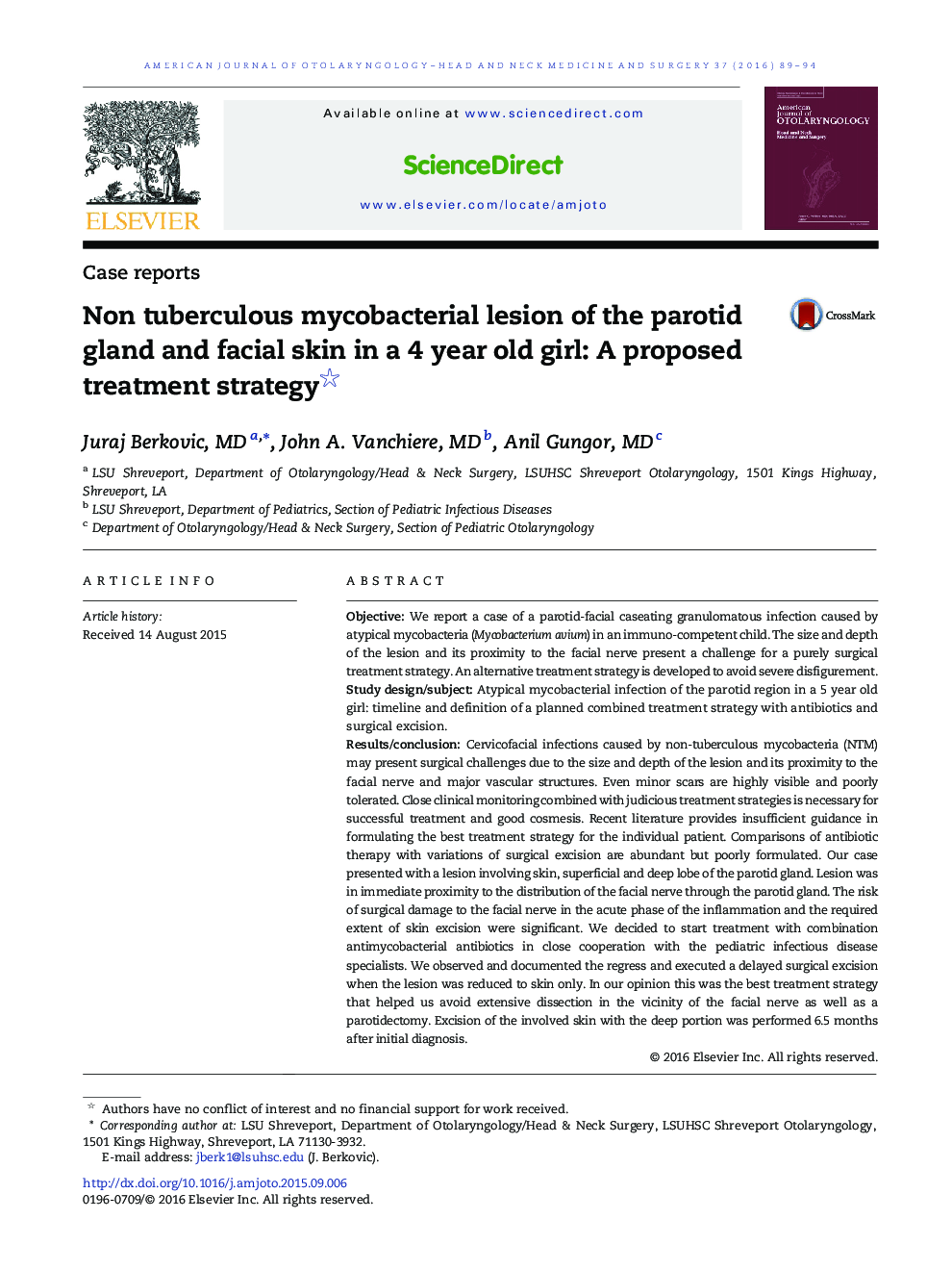| Article ID | Journal | Published Year | Pages | File Type |
|---|---|---|---|---|
| 4102981 | American Journal of Otolaryngology | 2016 | 6 Pages |
ObjectiveWe report a case of a parotid-facial caseating granulomatous infection caused by atypical mycobacteria (Mycobacterium avium) in an immuno-competent child. The size and depth of the lesion and its proximity to the facial nerve present a challenge for a purely surgical treatment strategy. An alternative treatment strategy is developed to avoid severe disfigurement.Study design/subjectAtypical mycobacterial infection of the parotid region in a 5 year old girl: timeline and definition of a planned combined treatment strategy with antibiotics and surgical excision.Results/conclusionCervicofacial infections caused by non-tuberculous mycobacteria (NTM) may present surgical challenges due to the size and depth of the lesion and its proximity to the facial nerve and major vascular structures. Even minor scars are highly visible and poorly tolerated. Close clinical monitoring combined with judicious treatment strategies is necessary for successful treatment and good cosmesis. Recent literature provides insufficient guidance in formulating the best treatment strategy for the individual patient. Comparisons of antibiotic therapy with variations of surgical excision are abundant but poorly formulated. Our case presented with a lesion involving skin, superficial and deep lobe of the parotid gland. Lesion was in immediate proximity to the distribution of the facial nerve through the parotid gland. The risk of surgical damage to the facial nerve in the acute phase of the inflammation and the required extent of skin excision were significant. We decided to start treatment with combination antimycobacterial antibiotics in close cooperation with the pediatric infectious disease specialists. We observed and documented the regress and executed a delayed surgical excision when the lesion was reduced to skin only. In our opinion this was the best treatment strategy that helped us avoid extensive dissection in the vicinity of the facial nerve as well as a parotidectomy. Excision of the involved skin with the deep portion was performed 6.5 months after initial diagnosis.
